Discovering the Leopold Museum: A Cultural Gem in Vienna
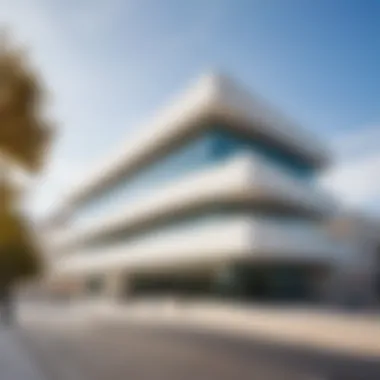
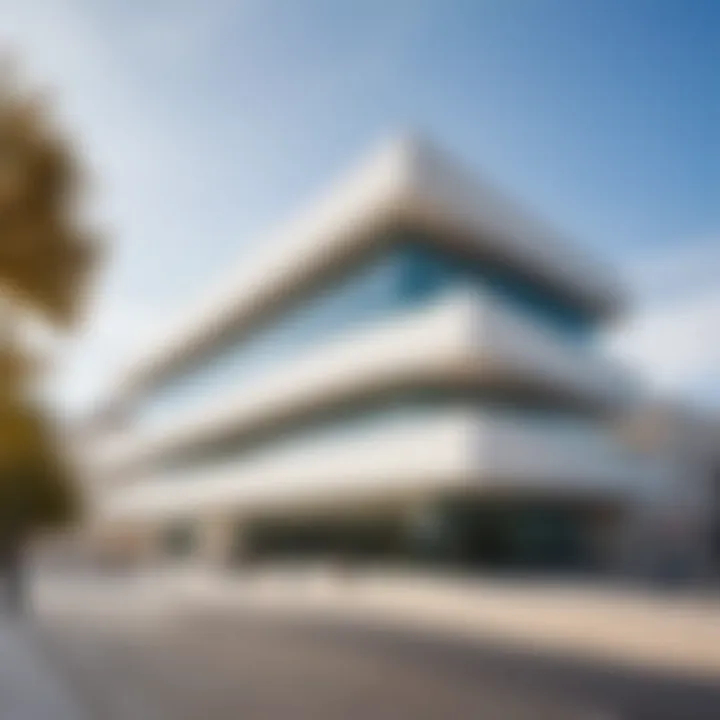
Intro
Vienna, a city often celebrated for its architectural splendor and rich history, hides within its paths a trove of artistic treasures. Among these, the Leopold Museum stands out, not just for its stunning collection but also for the pivotal role it plays in shaping the discourse of modern art. Nestled in the MuseumsQuartier, this museum doesn't just display art; it tells stories—of artists, movements, and the very evolution of creative expression itself.
As we explore the Leopold Museum, we delve into its significance within the cultural fabric of Vienna. With a focus on the artists it showcases, the context of its collections, and practical information for visitors, this guide aims to illuminate the treasures that await within its walls.
Preamble to the Leopold Museum
The Leopold Museum is not just another spot on your map of Vienna; it’s a treasure trove of modern art and cultural significance. Nestled in the vibrant MuseumsQuartier, this museum plays a crucial role in shaping understanding and appreciation of 20th-century Austrian art. It houses the largest collection of works by Egon Schiele, Gustav Klimt, and other influential artists.
Understanding the Leopold Museum is essential for anyone wishing to grasp the depth of Vienna’s artistic heritage. The institution stands as a bridge between past and present, melding historical relevance with contemporary discourse in art.
Another vital aspect of this museum is its architecture. Designed by Hans Pichler, it showcases an appealing modern style that complements the historic surroundings while inviting visitors to reflect on the artistic journey within.
Location and Accessibility
The Leopold Museum is strategically located at Neubau, a bustling district known for its vibrant cultural scene. If you step out of the Volkstheater subway station, a mere five-minute walk will lead you right to its entrance.
Accessibility is a key consideration here. The museum is equipped for all visitors, including those with mobility issues. Wheelchair access and facilities are available, ensuring that everyone can enjoy the art on display.
Getting There
- Public Transport: Take the U2 line to MuseumsQuartier stop. Alternatively, buses and trams run frequently.
- By Car: Limited parking is available in the area. It’s advisable to arrive early to secure a spot.
Architectural Features
The architecture of the Leopold Museum is certainly a sight to behold. It's a blend of contemporary design and functionality. The facade is sleek, with large glass panels that allow natural light to flood the spacious galleries, creating an inviting atmosphere for art lovers.
Internally, the layout is carefully planned. The open-plan galleries are conducive to exploring artworks from various angles. In addition, the design encourages a flow that allows visitors to engage with the pieces in a non-linear fashion, fostering a unique experience.
The museum's design also enhances its educational mission. Spaces for lectures and workshops are integrated, offering opportunities for deeper engagement with the subject matter. This thoughtful approach underscores the museum’s role as an educational resource in the art community.
"The Leopold Museum not only showcases art; it constructs an experience, encapsulating the spirit of Vienna's cultural legacy."
Historical Overview
The Leopold Museum is not just a building filled with art; it embodies a journey through time, intertwining with Vienna's rich cultural heritage. This section provides crucial insights into how the museum came to be and the evolution it has undergone. Understanding this historical context offers visitors a deeper appreciation of both the museum and the art within its walls.
Founding and Development
The Leopold Museum was founded in 2001, an initiative made possible by the generosity of Rudolf Leopold, a passionate collector and advocate for Austrian art. Rudolf's vision was to house his extensive collection, primarily focused on Austrian modernism, in a dedicated space. He believed that the artworks he had gathered over decades deserved a platform where they could be revered and appreciated by a wider audience.
Before establishing the museum, the collection had a temporary home in various exhibitions around Austria. It wasn’t until Rudolf Leopold's tireless efforts resulted in the donation of the collection to the Republic of Austria that the dream of a permanent exhibit became a reality. The museum was born out of not merely a love for art but a commitment to preserving and promoting Austrian culture. The building that houses the museum, situated in the MuseumsQuartier, was designed by the Viennese architects Ortner & Ortner, harmoniously integrating modern architecture with historic elements, which is a theme prevalent throughout Vienna.
Significant Milestones
Over the years, the museum has marked several milestones that solidified its status in the art world. One of such pivotal moments was the inaugural exhibition, where the collection was unveiled to the public. This moment set the stage for what would become a thriving cultural institution. Initially focused on early 20th-century art, the museum gradually expanded its horizons to include significant works from the Austrian avant-garde movement, adding depth to its narrative.
In 2015, the museum further enriched its offerings by modernizing its exhibitions and introducing interactive elements, appealing to a younger audience. This initiative also included educational programs aimed at fostering art appreciation among students and families. Such developments have not only increased foot traffic but also garnered positive reviews within the art community.
Moreover, the museum's ongoing partnerships with international art institutions have transformed it into a key player in contemporary art dialogues. The Leopold Museum has hosted various temporary exhibitions that brought global artworks to Vienna, showcasing its role as a cultural conduit. As the museum continues to evolve, it remains a testament to the importance of preserving artistic legacies while encouraging new interpretations and discussions.
"When you walk through the Leopold Museum, you are not merely an observer; you become part of the dynamic history of Austria's artistic evolution."
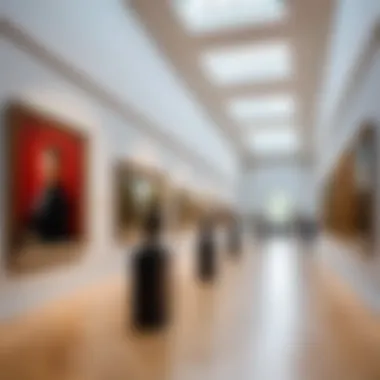
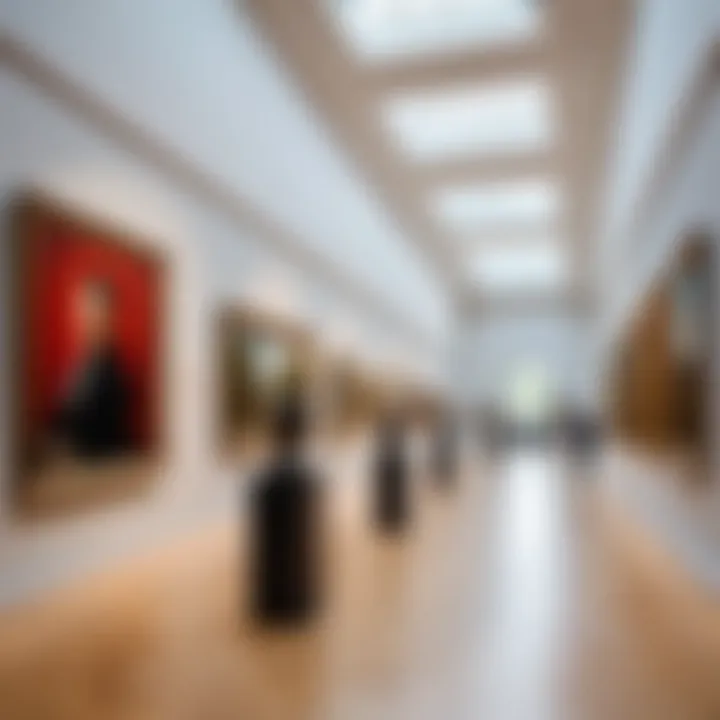
Through each of these milestones, the Leopold Museum has carved out a unique place in both the local and international art scene, inviting visitors to linger a little longer, delve deeper, and connect profoundly with the rich tapestry of Austrian art.
Artistic Collections
The artistic collections at the Leopold Museum are a cornerstone of its cultural significance, showcasing the evolution of modern art through the lens of pivotal artists from the late 19th and 20th centuries. These collections not only illustrate the artistic movements that shaped the period but also provide visitors with an opportunity to engage intimately with the notions of expression and individuality. Each piece tells a story, offering insights into the societal changes and personal experiences that influenced the artists' work.
Famous Artists Represented
The museum boasts an impressive lineup of famous artists, many of whom are quintessential to the Vienna Secession movement and the broader avant-garde narrative. Among them, Egon Schiele stands out with his raw and emotive depiction of the human figure. His works, such as "Portrait of Wally," reveal the complexity of human emotion, pushing the boundaries of artistic representation.
Another notable figure is Gustav Klimt, whose golden patterns and symbolic themes can be seen in several pieces throughout the museum. Works like "The Kiss" and "Death and Life" encapsulate the dualities of love and mortality, making them timeless explorations of the human condition. Additionally, Oskar Kokoschka, with his expressive brushwork, offers a stark contrast to the more decorative styles of Klimt and Schiele, reflecting the tumult of post-war sentiments.
Prominent Artworks
When it comes to prominent artworks, the Leopold Museum is often seen as a treasure trove. "The Embrace" by Gustav Klimt exemplifies the intersection of beauty and intimacy, inviting viewers to contemplate the depth of human connection. This work, among many others, transforms the gallery into an emotional landscape where each piece resonates with the audience on a personal level.
In contrast, Schiele’s "Self-Portrait with Physalis" employs stark, almost confrontational colors that challenge conventional aesthetics. This piece serves as an introspective mirror, prompting visitors to consider their own identities in connection to spontaneity and vulnerability.
"Art enables us to find ourselves and lose ourselves at the same time." – Thomas Merton
Such lenses through which each artwork can be interpreted highlight the dynamic nature of art appreciation itself. Visitors often leave feeling transformed, carrying not just the images but the emotional weight embedded in them.
Themes in the Collection
Exploring the themes found within the collection unveils a nuanced understanding of the artists' intentions. For instance, themes of existentialism and identity dominate many works, especially those from the early 20th century. Amidst the backdrop of war and societal upheaval, artists grappled with questions of existence and self-definition, mirroring contemporary struggles.
Moreover, the theme of eroticism in Schiele's paintings or the celebration of the female form in Klimt's works open dialogues about gender and sexuality – subjects that remain relevant today. The juxtaposition of vulnerability and strength in these themes encourages viewers to reflect on their own experiences, perhaps prompting them to question the societal constructs surrounding art, love, and loss.
Ultimately, the artistic collections in the Leopold Museum are not simply exhibits on a wall; they are invitations to delve deeper into the human psyche, to explore connections, and to appreciate the artistry that informs our understanding of culture and society.
Visitor Information
Visitor information plays a significant role when planning a trip to the Leopold Museum. Understanding the practical aspects can make your experience smoother and more enjoyable. From figuring out opening hours to knowing the costs involved, this information helps art lovers and casual visitors alike to better prepare for their visit. Whether you're an experienced traveler or a newcomer, these details are crucial in ensuring you maximize your time exploring this cultural treasure.
Opening Hours and Admission Fees
The Leopold Museum welcomes visitors almost every day of the week, but it's essential to check specific hours before you go. Generally, the museum is open from 10 AM to 6 PM, and on Thursdays, they extend these hours until 9 PM. This gives art enthusiasts ample opportunity to visit at different times throughout the week. Depending on the day of your visit, you might find it less crowded during the earlier hours.
As for admission fees, prices vary slightly based on age and status. Regular tickets are generally around 14 Euros. However, students, seniors, and groups can enjoy discounted rates, with tickets costing about 10 Euros. It’s also worth noting that entrance is free for children under 19. Curious visitors can often find helpful information on the Leopold Museum's official website, making it easier to plan their trips accordingly.
"Plan your visit to match the museum’s opening hours to avoid long lines and see all the artworks you want!"
Guided Tours and Audioguides
For those wanting to dive deeper into artwork and its context, guided tours are available, and they come highly recommended. These tours generally take about 1.5 hours and are led by knowledgeable guides who share insights not commonly found in textbooks. Joining one can offer a richer understanding of the exhibits.
Alternatively, audioguides are available for a more self-directed experience. These can be particularly beneficial if you prefer to explore at your own pace. The audioguides provide detailed commentary on the key pieces in the collection, allowing you to linger on those artworks that capture your interest the most.
You can choose from several themes depending on your interests, from expressionism to the museum's history. This flexibility makes it easier for every visitor to engage with the art in a way that suits them. Both options ensure that you leave with a deeper appreciation for the artworks housed in this vibrant space.
In sum, getting the visitor information straightened out before heading to the Leopold Museum enhances your experience and ensures a fulfilling exploration of this artistic haven.
Educational Programs and Events
The Leopold Museum serves not only as a gallery for art but also as a vital educational hub that enhances the experience of both learners and art enthusiasts. These programs and events create opportunities for deeper understanding and appreciation of the themes present in the museum's collections. Whether it's through interactive workshops or formal lectures, the initiatives here foster a rich learning environment that invites people of all ages to engage with art.
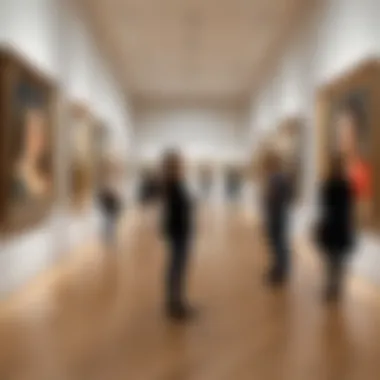
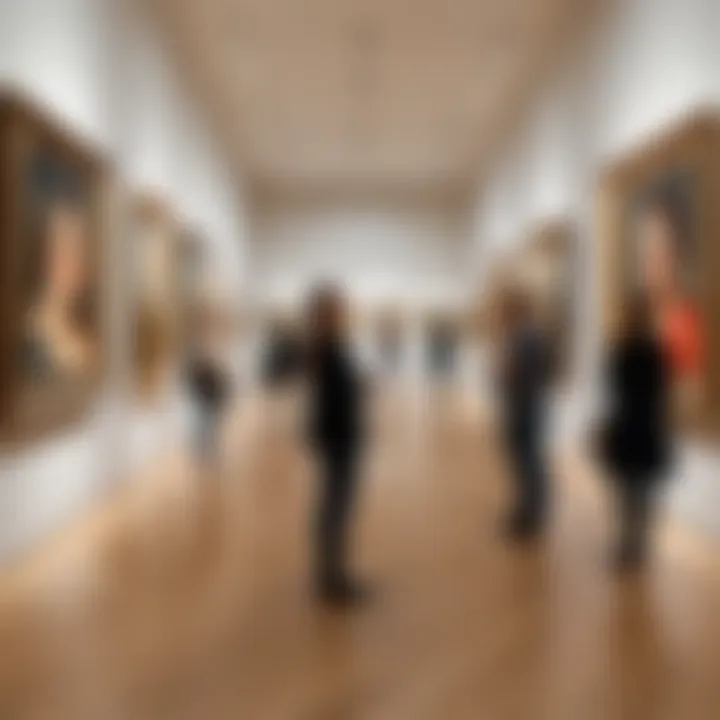
Lectures and Workshops
Lectures at the Leopold Museum cover a wide array of topics ranging from modern art history to specific artists and their techniques. Participating in a lecture can often provide a whole new lens through which to view the collections. For example, a talk focusing on Egon Schiele might delve into his distinct style and how social factors influenced his art. A visitor might leave with a richer understanding of the emotional intensity found in Schiele's portraits.
Workshops complement these lectures, offering hands-on experiences. These sessions often invite visitors to explore their own creativity by using the techniques of famous artists as a springboard. A workshop about painting inspired by Klimt’s vibrant use of color is a popular highlight. Attending such a workshop not only reinforces the connection between the viewer and the art but also encourages self-expression and exploration of artistic skills.
"The joy of experiencing art is magnified when you create it yourself."
These educational programs are particularly important for those looking to deepen their knowledge or perhaps even for skilled artists seeking to expand their own practice. They contribute significantly to the museum’s goal of fostering a comprehensive understanding of art's role in human experience.
Exhibitions and Temporary Collections
Temporary exhibitions at the Leopold Museum are often a gateway to new and emerging ideas in the art world. These events are curated to showcase trends that resonate with contemporary issues, whether social, political, or cultural. For example, a recent exhibition might have focused on the intersection between art and sustainability, featuring artists who utilize recycled materials in their works.
The museum also frequently collaborates with local and international artists to bring fresh perspectives to established narratives. This not only helps to maintain a dynamic atmosphere within the museum but also keeps the audience engaged with the evolving art scene.
In addition to temporary exhibitions, the museum sometimes hosts special collections spotlighting particular themes or styles. These collections may highlight a specific time period, such as the Austrian avant-garde, or focus on movements that have shaped the art world.
Such exhibitions are essential for students and professionals in the field, as they provide insights into current trends and help them understand their context within the historical continuum of art. It also promotes dialogue among visitors, encouraging varied interpretations and discussions about the artworks presented.
In summary, the educational programs and events at the Leopold Museum are designed to cater to a range of interests and expertise levels. From inspiring novice art lovers to equipping seasoned scholars with new insights, these events contribute significantly to the museum's ongoing mission of promoting art appreciation and education within the community.
The Leopold Museum's Role in the Art Community
The Leopold Museum stands as a pivotal institution in Vienna's art scene. Its influence reaches far beyond its exquisite collections; it serves as a vibrant hub for dialogue in the contemporary art community. The museum's collections encompass modern Austrian art, primarily focusing on the works of prominent figures such as Egon Schiele and Gustav Klimt. These artists brought a new voice to the Austrian cultural identity, showcasing emotional depth and innovative perspectives.
In a world that often pushes art towards commercialism, the Leopold Museum is a bastion of genuine artistic exploration. It engages with both local enthusiasts and international audiences, encouraging a deeper understanding of art's role in our lives. This section delves into the critical collaborations the museum has established and examines how it impacts contemporary conversations in the art world.
Collaboration with Other Institutions
The Leopold Museum thrives on its partnerships with various cultural and educational institutions. These collaborations enrich the museum's programme and broaden its reach. It frequently teams up with universities, galleries, and art collectives, facilitating a dynamic exchange of ideas and resources. This fosters an environment where art is not just viewed, but discussed and critiqued in meaningful ways.
For instance, initiatives such as joint exhibitions with the Museum of Modern Art Vienna allow for diverse narratives to be presented, creating a richer experience for visitors. The museum has also organized workshops in collaboration with local art schools, opening avenues for students to engage with professionals in the field. Such collaborations enhance educational offerings and also position the Leopold Museum as a key player in the local art ecosystem.
Impact on Contemporary Art Discourse
The Leopold Museum significantly contributes to discussions around contemporary art. It does this by thoughtfully curating exhibitions that challenge viewers' perceptions, pushing the envelope of traditional art appreciation. Through panel discussions, lectures, and community outreach, the museum encourages critical thinking about the role of art in society today.
Moreover, the museum offers a platform for emerging artists. By hosting temporary exhibitions that feature lesser-known talents alongside established masters, it emphasizes a diverse array of artistic voices. This not only enriches the cultural tapestry of Vienna but also stimulates conversations that resonate beyond the museum's walls.
The institution isn't just a museum in the conventional sense; it's a lively forum where ideas intersect and provoke new thoughts about art and its societal functions.
"Art must be an integral part of life; it must not just be a display for the elite or a commodity for sale, but a voice for the community and a bridge to understanding diverse experiences."
In summary, the Leopold Museum’s role in the art community extends from being a mere custodian of collections to acting as a catalyst for collaboration and discourse. As it continues to evolve, it will undoubtedly remain at the forefront of shaping how art is perceived and appreciated in contemporary society.
Visitor Experience and Reviews
Visitor Demographics and Feedback
Visitor experience plays a pivotal role in shaping a museum's reputation and influence. At the Leopold Museum, the variety of demographics is notable, ranging from art students eager to deepen their understanding, to tourists simply looking to soak up the cultural atmosphere of Vienna. Often, we find young adults, families with children, and retirees mingling, contributing to a vibrant and diverse ambiance.
Feedback, whether positive or negative, frames the conversation around this cultural institution. Many visitors report a sense of awe when encountering masterpieces by Egon Schiele or Gustav Klimt. Comments on social media platforms like Instagram and Facebook frequently highlight the accessibility of the museum, both in terms of location and the welcoming nature of its staff. However, some guests have shared concerns about crowding during peak season, which can detract from the experience. Such insights are invaluable for the museum as they can indicate where improvements may be necessary. Thus, gathering demographic data and seeking feedback becomes essential in tailoring experiences that resonate with varied audiences.
Comparative Analysis with Other Museums
When measuring the visitor experience at the Leopold Museum against that of other leading art institutions, unique distinctions arise, presenting a clearer view of what it offers. For instance, a trip to the Kunsthistorisches Museum is often fraught with the weight of its monumental architecture and world-class collections, which could feel overwhelming to some. In contrast, the Leopold Museum's modern yet intimate setup allows for a more personal connection to its artworks.
Comparative studies reveal that visitors frequently appreciate that the Leopold Museum emphasizes the works of Austrian artists. In doing so, it nurtures a local cultural pride that other museums may overlook. Moreover, visitors note the engaging staff and informative guides as a significant plus, making their journey through the galleries insightful rather than solely visual.
Here are a few aspects where the Leopold Museum stands out:
- Focused Collection: Unlike broader-based museums, Leopold's collections specialize in modern Austrian art, giving visitors a clear narrative.
- Friendly Atmosphere: Many reviews emphasize the approachable staff, who are willing to provide insights beyond basic facts.
- Accessibility of Information: Unlike some other institutions where educational materials can be overwhelming or sparse, the Leopold Museum provides well-structured information that enhances understanding without being verbose.
"The Leopold Museum is like stepping into a conversation with the past; each artwork feels like a voice beckoning for your attention."
Exploring Nearby Attractions
The Leopold Museum isn't just a destination in itself; it's a gateway to a world rich with cultural heritage and stunning sights. Understanding the nearby attractions adds a layer of depth to your visit, helping one appreciate the art not just within the museum walls but in the broader context of Vienna’s artistic landscape. By considering what lies outside the museum's doors, you can create a well-rounded experience, fitting in more varied cultural and culinary stops on your itinerary.
Cultural Landmarks in Proximity
When planning your trip, you’ll find several captivating cultural landmarks just a stone's throw away. Here are a few must-see sites:
- The Museum Quarter (MuseumsQuartier): This sprawling complex is home to contemporary art installations and numerous museums, including the MUMOK, which focuses on modern art. It makes for a nice counterpoint to the historical collections at the Leopold.
- The Hofburg Palace: A historic icon, the Hofburg serves as a reminder of Austria's imperial past. Within its walls, you'll discover the Imperial Apartments, the Sisi Museum, and the Spanish Riding School, all enriching your understanding of Vienna’s royal legacy.
- The Vienna State Opera: Whether you're an opera aficionado or a casual tourist, catching a glimpse of this architectural marvel or even better, a performance can be a fitting finale to a day of art appreciation.
- The Kunsthistorisches Museum: Another giant in the art world, this museum's exhibitions span centuries, showcasing pieces from the Middle Ages to the Baroque period. Pairing a visit to the Leopold with a stop here could expand your art knowledge significantly.
Being near these landmarks allows visitors to seamlessly weave together experiences that highlight both contemporary and historical dimensions of Vienna. With thoughtful planning, the museum can serve as a perfect hub for this rich exploration.
Recommended Dining Options
After wandering the art-laden halls of the Leopold Museum and other nearby attractions, refueling is essential. Thankfully, the surrounding area is dotted with delightful dining venues that cater to a myriad of tastes. Here are a few recommended spots:
- Café Leopold: Located within the museum campus, it offers a perfect spot to take a break. The café serves light meals, pastries, and coffee ideal for contemplating the art you've just absorbed.
- Das Eduard: A cozy restaurant that serves up traditional Austrian dishes alongside a modern twist. From schnitzels to seasonal salads, it’s a delightful way to experience local cuisine in a relaxed atmosphere.
- Nunu Coffee: If you're in the mood for something lighter or just a caffeine fix, this specialty coffee shop has a great selection of coffees and pastries. It’s a popular gathering place, giving you a taste of local life.
- Siedepunkt: For those who appreciate a culinary adventure, this restaurant combines local ingredients with international cuisine influences, offering an unusual twist on traditional Viennese fare.
Each dining option complements a visit to the museum, allowing you to round off your experience with good food, a warm atmosphere, and perhaps even a chat with locals about their favorite spots in the city.
"In Vienna, every corner reveals a story; art, history, and culinary delights await just steps away from one another."
A well-thought-out approach to nearby attractions enriches your visit, deepening your connection to Vienna and offering a tapestry of experiences that reflect the heart and soul of this vibrant city.
End: The Legacy of the Leopold Museum
The Leopold Museum stands as a pivotal institution within the realm of art in Vienna, encapsulating the essence of modern Austrian art and its historical narratives. Its legacy isn’t merely confined to the stunning artworks housed within its walls or the architectural marvel that is its building; instead, it extends to the cultural conversations it fosters and the perspectives it brings forth regarding art appreciation. This museum serves as a bridge between the past and the present, illuminating the threads that connect historical contexts with contemporary discussions in the art world.
Future Directions and Developments
A significant aspect of the Leopold Museum's legacy lies in its forward-thinking approach to exhibitions and public engagement. The museum continuously seeks to diversify its offerings, ensuring that it remains relevant in a constantly evolving cultural landscape. Future directions could include:
- Enhanced digital engagement through virtual tours, especially beneficial post-pandemic.
- Collaborations with local and international artists to showcase emerging movements and perspectives.
- Broadened educational programming that might reach into schools and communities, engaging younger generations.
This openness to development reflects a commitment to not just preserving the past, but also embracing the future of art. The museum aims to be a hub for dialogue, not just a storage facility for artworks.
Final Thoughts on the Visitor Experience
Visiting the Leopold Museum can be a transcendent experience, one that resonates deeply beyond the confines of conventional tourist attractions. For some, it might feel like an intimate conversation with artists like Egon Schiele or Gustav Klimt, brought to life through their expressive pieces.
The museum’s layout is designed with the visitor in mind, allowing for a fluid transition between artworks while also providing moments of reflection and solitude. Feedback from visitors often highlights:
- Accessibility: Many have noted how easy it is to navigate, with clear signage and thoughtful placement of artworks.
- Informative Displays: The informational plaques offer just enough insight to enhance understanding without overwhelming the audience.
In a city brimming with culture, the Leopold Museum sets itself apart by reminding visitors of the profound impact art can have on both individual and collective levels. This isn’t merely an art exhibition; it’s an evocative gallery of history, emotions, and ideas, extended beyond physical boundaries. Above all, it’s a beacon for anyone with a thirst for knowledge and a passion for artistic expression.
"Art must be an integral part of our lives—an echo of social and cultural imperatives that reverberate through generations."
As we reflect on the journey through the Leopold Museum, we recognize its ongoing influence, not only as a bastion of art but as a vibrant participant in the discourse surrounding modernity and identity in the art community.







